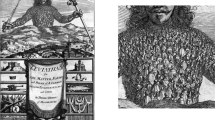Abstract
In What Things Do, Verbeek (What things do: philosophical reflections on technology, agency and design. Penn State University Press, University Park, 2005a) develops a vocabulary for understanding the social role of technological artifacts in our culture and in our daily lives. He understands this role in terms of the technological mediation of human behavior and perception. To explain mediation, he levels out the modernist separation of subjects and objects by decreasing the autonomy of humans and increasing the activity of things. His approach consists primarily within a clever integration of the theories of Latour and Ihde, which provides a comprehensive understanding of the social role of technological artifacts. Despite the fact that Verbeek’s book is carefully thought out and already quite influential in the field of philosophy of technology, his approach raises some conceptual and pragmatic questions. The conceptual questions concern (a) the precise meaning of the concept of mediation and the possibility of distinguishing between different forms of mediation, and (b) the differences and similarities between human and technological agency and intentionality. The pragmatic questions concern the application of his theory to the realm of engineering ethics. Particularly pressing is the question of how to assign (moral) responsibility to humans when technological artifacts are mediating the outcomes of human actions. With this article, I will raise these issues, and look forward to Verbeek’s reply.
Similar content being viewed by others
Notes
I borrowed this term from Laurier and Philo (1999), Verbeek does not use it.
References
Collins, H., & Yearley, S. (1992). Epistemological chicken. In A. Pickering (Ed.), Science as practice and culture (pp. 301–326). Chicago: University of Chicago Press.
Floridi, J., & Sanders, J. W. (2004). On the morality of artificial agents. Minds and Machines, 14, 349–379.
Ihde, D., & Selinger, E. (2003). Chasing technoscience: Matrix for materiality. Bloomington: Indiana University Press.
Latour, B. (1993). We have never been modern (C. Porter, Trans.). Cambridge, MA: Harvard University Press.
Latour, B. (1994). On technical mediation: Philosophy, sociology, genealogy. Common Knowledge, 3, 29–64.
Latour, B. (1996). Aramis or the love of technology. Cambridge, MA: Harvard University Press.
Latour, B. (1999). Pandora’s hope: Essays on the reality of science studies. Cambridge, MA: Harvard University Press.
Laurier, E., & Philo, C. (1999). X-morphising: Review essay of Bruno Latour’s Aramis or the love of technology. Environment and Planning A, 13, 1047–1072.
Lenk, H. (1993). Uber Verantwortungsbegriffe und das Verantwortungsproblem in der Ethik. (The concept of responsibility and the problem of responsibility in ethics). In H. Lenk & G. Rophol. Technik und Ethik. Reclam , 8395, 112–148.
Smith, A. (2003). Do you believe in ethics? Latour and Ihde in the trenches of the science wars (or: watch out, Latour, Ihde’s got a gun). In D. Ihde & E. Selinger (Eds.), Chasing technoscience: Matrix for materiality. Bloomington: Indiana University Press.
Verbeek, P. (2004). Stimuleer gedragsbeïnvloedende technologie (Stimulate behaviour changing technology). Den Hague: CDV.
Verbeek, P. (2005a). What things do: Philosophical reflections on technology, agency and design. University Park, PA: Penn State University Press.
Verbeek, P. (2005b). The morality of design: Some notes on the moral agency of artifacts, users and designers. Paper for SPT 2005 conference technology and designing. Delft: Delft University of Technology.
Verbeek, P. (2006). Materializing morality. Science, Technology and Human Values, 31, 361–380.
Author information
Authors and Affiliations
Corresponding author
Rights and permissions
About this article
Cite this article
Waelbers, K. From Assigning to Designing Technological Agency. Hum Stud 32, 241–250 (2009). https://doi.org/10.1007/s10746-009-9117-1
Received:
Revised:
Accepted:
Published:
Issue Date:
DOI: https://doi.org/10.1007/s10746-009-9117-1




